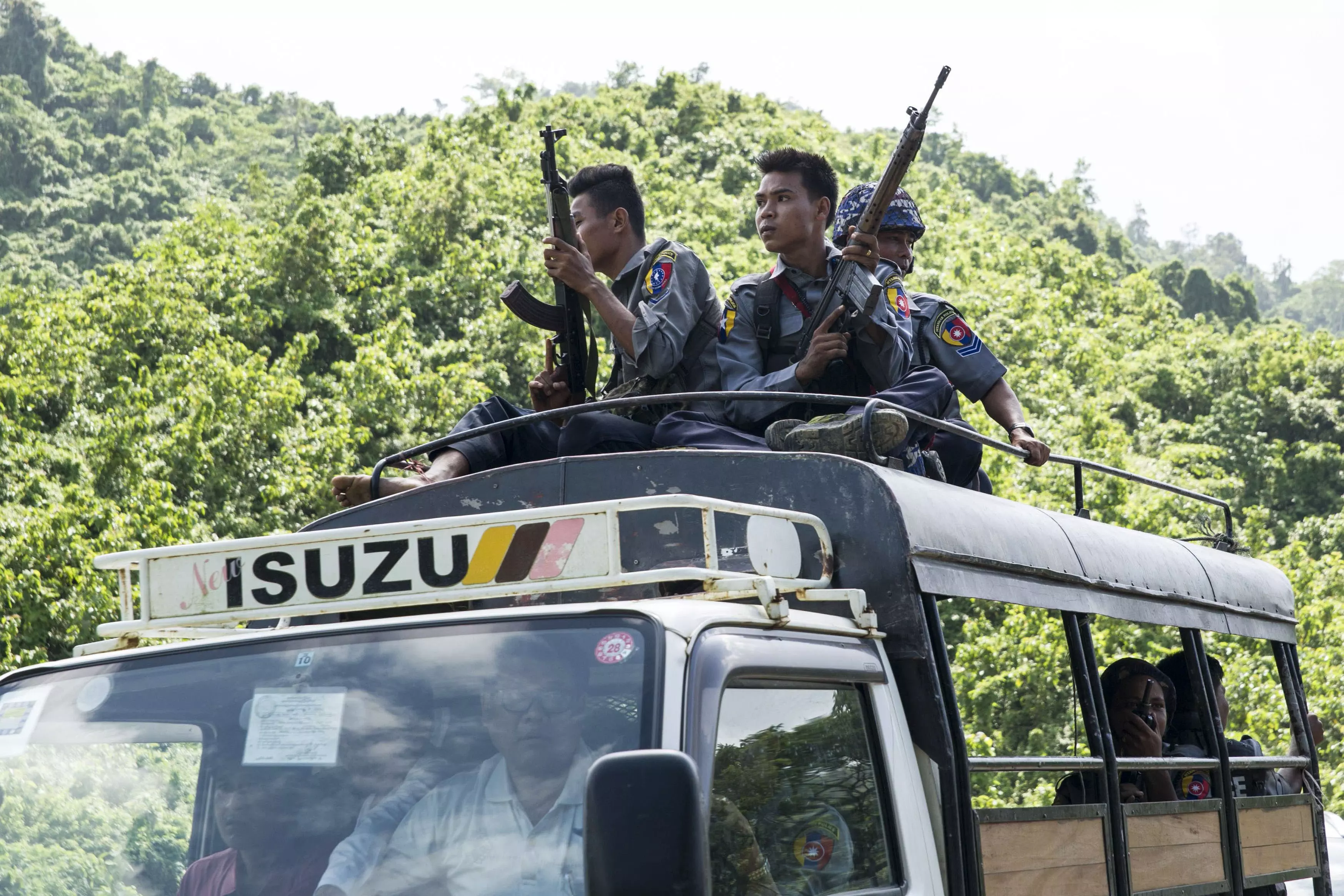Pradeep C. Nair | After Rakhine’s fall to Arakan rebels, the consequences for Myanmar to be dire

On December 9, 2024, the Arakan Army (AA), one of the most powerful ethnic armed organisations and one from the three Brotherhood Alliance (the other two being MNDAA and TNLA), battling the Myanmar Army (Tatmadav) captured one of the last Army outposts in the strategic western town of Maungdaw, thereby gaining full control of the 271-km-long border with Bangladesh. It is the first full border of Myanmar with any country to fall. On December 20, the AA captured the regional Tatmadav headquarters in Rakhine, marking a significant victory in its fight against the military junta. The HQ’s deputy commander, Brig. Gen. Thaung Tun, and its chief operating officer, Brig. Gen. Kyaw Kyaw Than, were among those taken prisoner. Earlier, in August, the MNDAA seized control of the regional command headquarters in Lashio in the Northeast. These developments were reported in certain sections of the Indian media, but their import and significance has largely not
been understood. Myanmar sits at the intersection of India’s “Neighbourhood First” policy as also “Act East” policy. And in Myanmar, for overcoming the Siliguri corridor imbroglio, it is the state of Rakhine through which the Rs 4,904-crore Kaladan Multi-Modal Trade and Transit Project (KMTTP) passes.
The AA is the military wing of the Buddhist Rakhine ethnic group in Rakhine state, where they are the majority. This AA victory in Rakhine is the culmination of a decade-long struggle to carve an independent state out of Myanmar. With the entire state of Rakhine now virtually under its control, it is on the verge of realising its long-cherished dream of a self-governing Arakan region. This “liberation” aims to restore the sovereignty that was lost when the Burman kingdom conquered the Arakanese capital in the late 18th century. Rakhine state does not border India, but the key port of Sittwe and Sittwe-Paletwa road of the KMTTP pass through Rakhine. The AA now has control over 14 out of the 17 townships of Rakhine, besides one in the neighbouring Chin state. It is just a matter of time before the entire state of Rakhine now falls under the AA’s control. The consequences of this must be faced by India, China and Bangladesh.
For India, at the heart of KMTTP is the deep-sea port of Sittwe, which would ensure maritime connectivity from Kolkata, the Kaladan River that flows from Mizoram into the Sittwe port in Rakhine and the 109-km road from Paletwa to Zorinpui in Mizoram. The significance of the KMTTP is not just for India, but also for Myanmar, and thus needs to be understood.
Overcoming the Siliguri dilemma of the Northeast will ensure better connectivity, cut transportation costs, speed up development and ensure that the Northeast is no longer a laggard in the overall rise of India. For the people of Rakhine, a state that has been neglected for long, KMTTP would mean better and speedier development. Rakhine is, incidentally, one of the least developed states of Myanmar with no significant commercial port or good road connectivity for its economic development. This project could also herald the development of the neighbouring state of Chin and to some extent the Sagaing region. The development would be by virtue of goods and services reaching these regions both from the bustling port of Kolkata as well as from the Northeast states.
While Myanmar’s Rakhine state has drawn the world’s attention now due to the AA offensive, the unique role Rakhine plays in China’s Belt and Road Initiative must be understood. Myanmar’s comparative advantages in China’s BRI blueprint comes from its geopolitical location as China’s potential gateway to the Indian Ocean. Rakhine state is the host to China’s largest investment projects in the country: the $2.5 billion Sino-Myanmar oil and gas pipelines, the $7.3 billion Kyaukphyu deep-sea port and the $2.7 billion special economic zone. China sees India’s Act East Policy and in it, the major KMTTP project, as one that clashes with its strategic and economic interests, particularly because Sittwe and Kyaukphu are both in Rakhine. China would therefore continue to attempt to delay or scuttle the KMTTP, which could well be by using the AA as a proxy.
Stability in Rakhine state is also significant for Bangladesh. In 2016-17, there was an exodus of over a million Rohingyas from Myanmar into Bangladesh. There are now 23 refugee camps in Cox’s Bazar. Armed groups like the Arakan Rohingya Salvation Army (ARSA) and Rohingya Solidarity Organisation (RSO) with Pakistani connections wield a major influence in these camps. These could sooner rather than later join hands with the fundamentalist Jamaat factions causing security implications for Bangladesh.
The KMTTP will transform India’s Northeast and Rakhine immensely. There is thus a necessity to constantly engage with all stakeholders not just in Myanmar (the military junta, AA and PDF) but also those in the region. Hence the recent visit by foreign secretary Vikram Misri to participate in a meeting hosted by Thailand, which included Myanmar’s neighbours China, Bangladesh, Lao PDR and a junta representative, is a step in the right direction. Last year the AA had said that it would not disturb the construction of the road section of the KMTTP. It had assured India that “it was not against the project, but only wanted to protect the interests of the local people”. From India’s side, an MEA spokesperson recently announced the expenditure incurred on the KMTTP project would be in the form of grants. This is quite unlike the predatory Chinese, whose investments in Kayukphu are purely self-serving and do not serve the interests of either Rakhine state or the rest of Myanmar.

